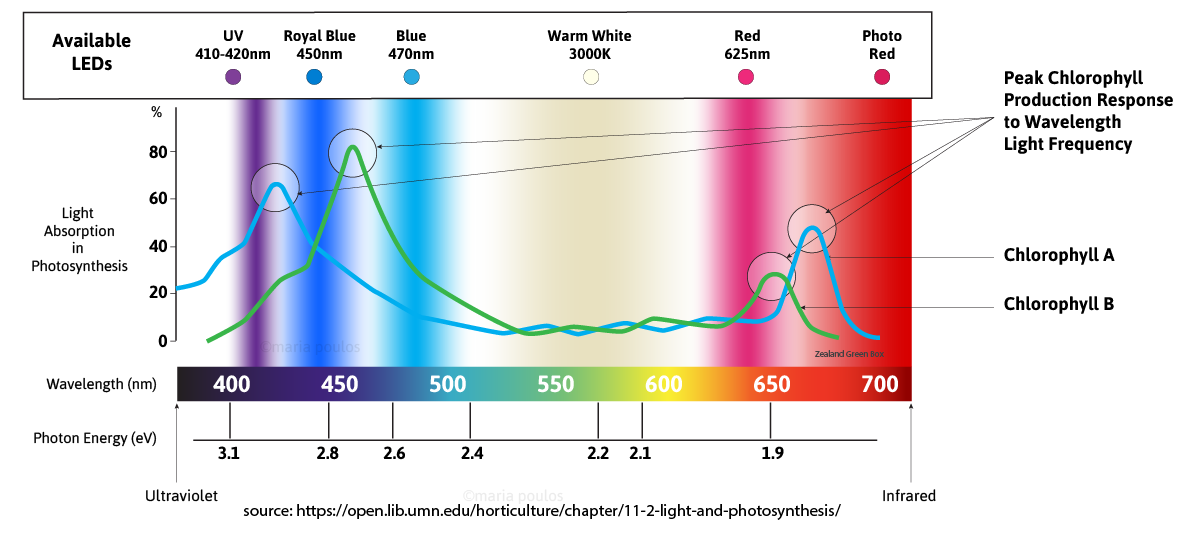What makes a grow light good?
Color spectrum for optimal plant growth
Sunlight is often called a full color spectrum, or white light, at least at mid-day. This in essence is what we want to mimic when using a grow light. A full color spectrum grow light will work, so will a florescent light. However understanding how colored light effects plant growth may help produce a healthier plant in a controlled environment, such as in a grow box.
Plants respond to different colors within the light spectrum. What makes plants grow is the production of chlorophyll which supplies energy to the plant. Chlorophyll is also what makes a plant nutrient rich.
The optimal grow light corresponds to the colors on the spectrum for best chlorophyll production. When using LEDs in the manufacture of grow lights, you will want to use light that encourages chlorophyll. Therefore, a full spectrum light is not necessarily the best option for growing a plant. The optimal light for growing a plant would included a wavelength that best corresponds to both chlorophyll-a and chlorophyll-b production.
Selecting the best LED for a grow light.

Available LEDs on the market vs optimal light frequencies
Peak chlorophyll-a production wavelength is at 425, the closest LED available is a UV 410-420nm. Slightly off of the optimal range. Additionally, chlorophyll-b peaks production at about 460, whereas the readily available LEDs are in the 450n or 470nm range.